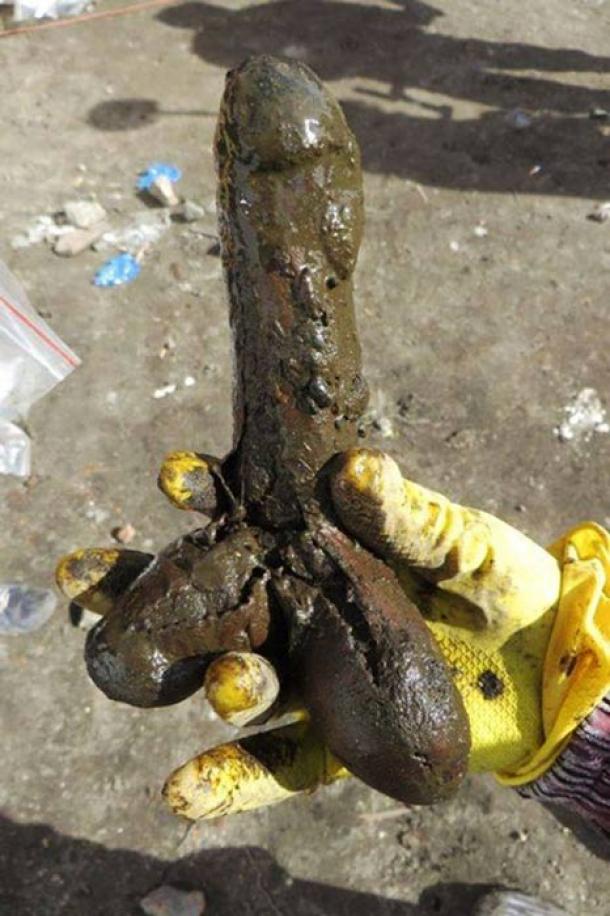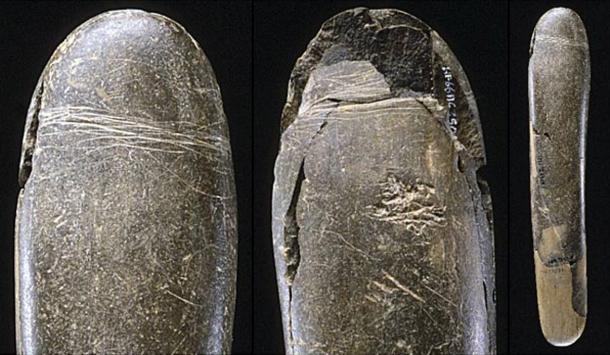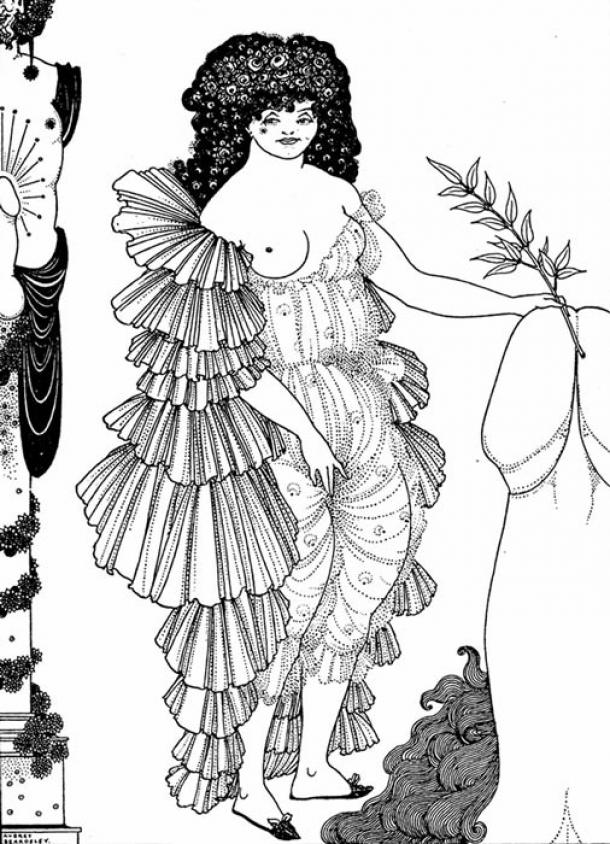Archaeologists excavating an ancient latrine in the Baltic city of Gdańsk in Poland made an unexpected discovery when they unearthed a 250-year-old 𝓈ℯ𝓍 toy. The construction of the object and the location in which it was found suggests the phallus shaped artifact was used for personal pleasure rather than for religious ritual.
The Regional Office for the Protection of Monuments in Gdańsk said in a press release in 2015 that the object was “preserved in excellent condition”. Discovery News reported that the relic dates from the second half of the 1700s. It measures eight inches long and was made of leather, filled with bristles, and constructed with a wooden tip.

The 250-year-old 𝓈ℯ𝓍 toy was found by archaeologists during a dig at an ancient toilet in Poland. ( Regional Office for the Protection of Monuments)
Discovered at a School of Swordsmanship
According to MailOnline, the discovery was made in the latrine of an old school of swordsmanship. Previous discoveries at the site included numerous wooden swords, which would have been used for training. In the 2015 excavation, researchers also uncovered fragments of pottery and jewelry.
Archaeologists have only been left to speculate as to what the phallic object was doing in the latrine. Marcin Tymiński, a spokesman from the Regional Office for the Protection of Monuments said whether the 𝓈ℯ𝓍 toy had been dropped “by accident or on purpose is anyone’s guess”.
“It was certainly expensive. Cleaning revealed it was made of high quality leather,” said Tymiński. “This is an extraordinary find for people researching the history of erotica,” he added.
The Oldest Known Artifact Representing a Phallus
Physical representations of the phallus have been around for thousands of years. The oldest recovered artifact in this shape dates to the Paleolithic era. Made of siltstone and polished to a high gloss, the phallic object was found in the famous Hohle Fels Cave near Ulm in Germany and has been dated to about 28,000 years old.
Debate rages on about whether its primary purpose was for religious ritual or personal pleasure. Those in favor of the latter argue that the fact that it is ‘life size’ and polished to a high degree indicates it was used as a 𝓈ℯ𝓍 toy.

The 28,000-year-old siltstone phallus found in the Hohle Fels Cave. Credit: J. Liptak
Historical References to Sex Toys
Historical references to the use of 𝓈ℯ𝓍ual aids date back millennia. It is known that both male and female Romans and Greeks used phallic objects for pleasure. In Aristophanes’ anti-war comedy “Lysistrata” (411 BC), he tells of a woman’s mission to end the Peloponnesian war, and writes that the women discuss using 𝓈ℯ𝓍 toys in order to withhold 𝓈ℯ𝓍 from their husbands in an effort to stop the war.

Illustration of Lysistrata (1896). (Public Domain) In Aristophanes’ play ‘Lysistrata,’ the women of Greece withhold 𝓈ℯ𝓍 to encourage an end to the Peloponnesian War.
In the Middle East, historical reports refer to Egyptians using camel dung coated in resin as 𝓈ℯ𝓍ual aids. And in the famous collection of folk tales, ” One Thousand and One Arabian Nights,” which traces its roots back to ancient and medieval Arabic, Persian, Indian, Egyptian and Mesopotamian folklore and literature, dildos are discussed as being made from gold, silver, or intricately carved ivory.
The Greeks are believed to be the first to use leather or animal intestine to cover a carved penis, adding a more natural feel.
Phallic Objects were Meant to Treat ‘Hysteria’
Phallic objects were not just used for 𝓈ℯ𝓍ual pleasure, however. In ancient Greece, ‘hysteria’ was believed to be a medical condition caused by a meandering and misbehaving uterus caused by a lack of “hysterical paroxysm” (orgasm). The famous physician Hippocrates believed the condition caused all manner of symptoms, including insomnia, emotional instability, headaches, and general ill health. Women were instructed to use ‘olisbos’ (stone or wood 𝓈ℯ𝓍 toys) to prevent the onset of hysteria.
The belief that women could suffer ‘hysteria’ from a lack of 𝓈ℯ𝓍 continued all the way into the early 20th century, with Medieval and Renaissance physicians carrying out ‘genital massage’ of their patients to supposedly cure them of their woes.
Source: ancient-origins.net



